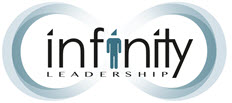Shaping culture from the inside-out…
In our work, we often come across people who feel powerless to influence the organisations they are a part of. While you might expect this from middle management or front line staff, in our experience, this feeling is also expressed at executive level… surprised? This is the level that can make changes right? This is the level that can pull the necessary levers… surely they must feel all-powerful? Wrong.
People in authority can change the ‘seen’ variables such as policies, procedures, processes, IT systems, performance measures etc. However, this is only a part of the picture. ‘Unseen’ variables such as culture, values, basic assumptions and the thoughts, feelings and motivations of individuals – make up a significant, and largely ignored part of the picture. A recent study of more than 100 companies engaged in major change efforts demonstrated that 85% don’t deliver on their objectives. The two reasons they found: 1) underestimating the complexity of the change, and 2) not paying attention to the inner aspects of change – the ‘unseen’ variables we mentioned earlier1.
So, how do we address the unseen variables? The most common approaches involve changing policies and processes in order to push people and cultures to change e.g. embedding the organisation’s values into the performance management system or building a new IT system to support desired behaviour. These approaches are important, but the problem is that it often stops there. ‘Unseen’ variables such as what the staff think about the organisation’s values, their capacity to bring them to life and how this aligns with their personal values are often overlooked. Paying attention to the internal world of stakeholders involved in a change is essential for effective leadership. This is where authentic leadership can make its contribution.
Nelson Mandela said that “changing the universe is an inside job.” Leaders need to recognise that they are a part of the system that they are trying to shape. If we want to change the system, our first step is to pay attention to the internal aspects of ourselves. What are my values? What big assumptions am I making? Why do I lead? What is my leadership about? Without answers to these questions we can feel powerless, unable to cope with the overwhelming scale of complexity and change all around us. Answering such questions though provides a solid foundation from which to lead- a kind of compass we can use to navigate through change, allowing us to move in the right direction even when we can’t see the destination. A leader who is clear about their own internal world, who shares that world openly with others and acts with skill and discipline in line with their purpose is a leader people want to follow. This is the bedrock of effective leadership and it is independent of position or title.
When people across an organisation begin to express their leadership in this way, they begin to influence the system of which they are a part without even realising it. External change flows from internal change and we see the system begin to shift in a purposeful direction rather than scrambling to stay afloat in a volatile ocean.
We saw this clearly with a client we worked with over 6 months. Our focus was addressing the internal aspect of the leadership culture. We spent little time talking about strategy, metrics, examining the effectiveness of performance systems etc. Rather, we invested our time in exploring the internal assumptions each leader was making about their own leadership, their relationship to other leaders and their relationship to the broader system. At first, people were confused, they wanted solutions. However, the trust we built led them to persevere in cultivating the soil rather than immediately planting the first available crop. They spent time understanding themselves first, then used that self-knowledge to build more open and honest relationships within the leadership team. Gradually, and then suddenly the external, visible ‘solutions’ started to emerge not only within individuals and the leadership team, but also in the broader system of stakeholders.
One example was that they completely redesigned their promotions review process. Previously, leaders would see the promotions process as a battle to be won and argue for their own staff members to get promoted above those in other teams. This process took weeks of analysis and hours of painful meetings where conflict would disconnect the leadership team and sometimes result in grudges that caused problems elsewhere. Through their deeper, internal work a better solution emerged. They designed a process based on the principle of “Owning your No” If a leader recommends somebody for promotion and others in the leadership team disagree – it is the responsibility of those disagreeing to justify their “No”. This has led to a dramatic shift in the culture of the leadership team. For example, if a leader says “No” because they don’t know that staff member’s work well enough, it becomes their responsibility to get to know it before the next leadership team meeting. If it’s because that staff member lacks necessary experience, it becomes the “No” leader’s responsibility to work with the staff member’s leader to help them get that experience. This has led to cross-functional mentoring relationships which is creating a more collaborative and cohesive culture across divisions.
What was a painful and lengthy process, weeks of analysis and unhealthy conflict during decision making has become an ongoing process that builds relationships and ends in a short sharp ratification process where agreement is reached within a couple of hours. The broader ‘system’ is benefiting from reduced time and stress, more transparency, more development opportunities for staff (e.g. mentoring), less conflict, more ownership for decisions, the list goes on…
“Owning your No” would never have worked if we had started by defining that process. It only works because everyone in this leadership team focussed on the ‘inside job’ of personal change first.
Notes and references:
1 https://leadershipcircle.com/wp-content/uploads/2011/05/07_SpiritOfLeadership.pdf
